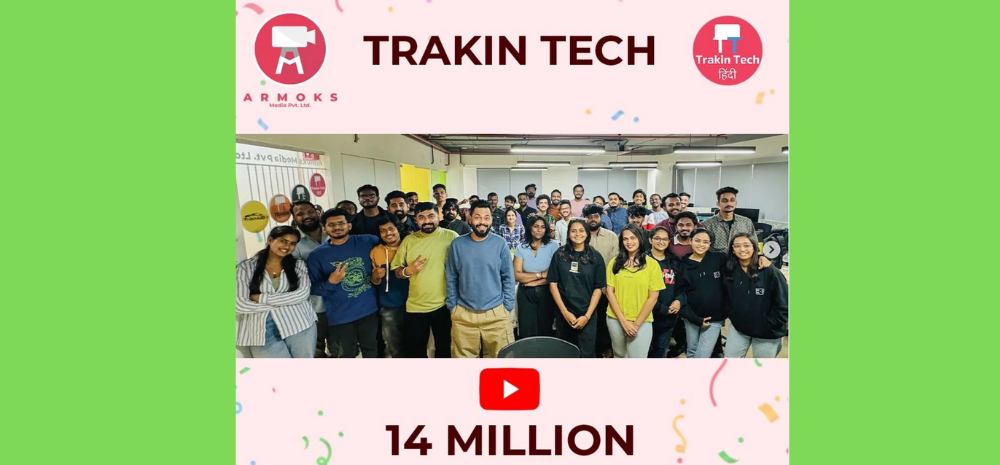Recently, we interacted with Mr Praveen Krishna Dev, Chief Executive Officer, Backspace Tech – a unique tech startup that is transforming Chargeback and Dispute experiences with their Unified Dispute Management platform.
![[Exclusive Interview] This SaaS Startup Is Replacing Manual Process From Dispute Management With Automation & Tech](https://trak.in/stories/wp-content/uploads/2023/05/Untitled-design-7.png)
Here are the interview highlights:
1. What is backspace tech? Please tell us more about the business and when did you start?
Backspace Tech is a fintech SaaS platform that works with banks, payment gateways and payment processors to automate processes that are in current practice for card and UPI disputes. The idea was conceived in September 2020, and we were in research mode for quite some time as we explored the idea and its viability, implications and opportunity. Once we all got all the inputs finalized, we started Backspace officially in March 2022.
2. Who are the founders and how do you differentiate the business from its competitors?
We have been childhood friends since kindergarten and we had our first startup idea in 2013 to revolutionize the end-to-end automobile service industry, Greazit. Unfortunately, that idea didn’t take off, so it led us back to the drawing board and rethinking our approach. And Vishwa came up with the idea of Backspace as he had strong roots in the BFSI technology development.

Mr Praveen Krishna Dev, Chief Executive Officer, Backspace Tech
We found out that the area of chargebacks remains unaddressed, especially from the financial institution’s perspective for both cards and UPI transactions. Even though there are many solutions on the merchant side, the financial institutions are grossly overlooked, and Backspace was conceived to fill that gap. Even though there are some no-code platforms available for building customized Chargeback management software, it is a costly process.
We have no direct competitors for our Chargeback management solution, but there are some merchant focused companies in the service industry occupying a significant position in the market. Furthermore, there is currently no Software-as-a-Service (SaaS) product for Chargeback management globally.
3. How Fintech Startup Backspace Tech claims to solve the disputes and chargebacks on UPI & Card Payments for the financial institutions with their SaaS Products?
Our Unified Dispute Management (UDM) platform is a multi-faceted SaaS platform built to address every step of the chargeback process, both on the issuer and acquirer side. As the dispute process is always dependent on the card networks or regulators like NPCI, RBI, the process remains the same. UDM is built to work within these systems, so that it can be easily integrated with any banking stack and start digitizing their dispute handling capabilities from day one. UDM can support its users to handle or respond to disputes with complete automation thereby reducing the need for manual processing and human efforts. The existing operations team can focus on improving customer experience and retention while UDM takes care of all the heavy lifting.
4. How does backspace help banks to save costs through its technology?
In our past experiences and research, we found that banks are struggling to embrace new tech due to legacy systems and the significant cost involved in the overhaul of systems. And when it comes to disputes, almost 90% of the process is manual. It takes a considerable amount of time, money and resources to train the operations team to properly apply the current regulations, assign the right reason/response codes. On the issuer side, UDM collects all incoming disputes and assigns the right reason codes and files the case with Visa Resolve online or Mastercard Chargeback System automatically based on the information received, thereby reducing the manual effort that is currently required.
While on the acquirer side, UDM communicates with the merchant on behalf of the acquirer and collects the necessary evidence needed to refute the chargeback. It also sends timely notifications to the merchants to submit the representment package within the SLA and TAT for every chargeback raised.
UDM also has an audit trail that can give the analyst a complete history of how the dispute has been handled so far. Furthermore, UDM also has an AI case assignment feature where the incoming disputes are intelligently assigned to the right analyst based on their strengths.
UDM sends automated message templates based on the customized Business Rule Engine suited to the banks and their customers (both merchants and individual cardholders) needs.
All these processes can be completely automated with UDM, starting right from the cardholder to the merchant.
5. How does the business work and what are the advantages for merchants to work with backspace tech?
UDM, a Software-as-a-Service (SaaS) solution, is available in both a pay-as-you-go model and an enterprise self-hosted model. Financial institutions such as banks and payment aggregators can benefit from faster go-to-market (GTM) capabilities by utilizing UDM to automate chargeback management processes and prevent losses due to risk. Backspace Tech’s UDM is designed to help banks streamline their chargeback process and dispute lifecycle by collaborating closely with card networks through the same member bank. By reducing the cost for every dollar spent on disputes from $1.5 to $1, UDM aims to increase operational efficiency and customer satisfaction by enabling AI-assisted chargeback case management. UDM also helps banks comply with three layers of compliance, including regulation from local bodies, card networks, and their own organizational compliance.
6. Lastly, what is your vision for the next 6-12 months? How do you wish to expand backspace tech in terms of Business, team size, operations, etc..?
Over the next 6-12 months, we plan to expand our product’s footprint by establishing a global presence and adding support for other card networks. This will involve expanding our business to include banks in the Asia Pacific region, as well as expanding to North America, Europe, the Middle East, and the UK. Currently, our team consists of 20+ members, but we plan to increase our headcount to 50-70 within a year to support our growth and expansion efforts.










